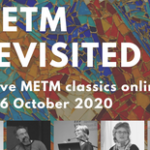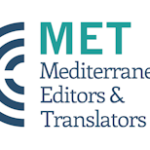An exclusive 3-part on-line training course covering everything you need to know about IntelliWebSearch v. 5, aka “IntelliWebSearch (Almost) Unlimited”. IntelliWebSearch can greatly accelerate your translation speed by locating definitions, identifying prevalent usage or looking for existing translations on the web. Learn how to get the best out of this software by attending our 3-part video course with the developer Michael Farrell as your trainer.
Part 1: What is IntelliWebSearch 5 (basic features)? Adding on-line resources using the Quick Wizard.
Part 2: Specific search techniques; adding specific search settings using the Quick Wizard.
Part 3: Adding on-line resources using the Step-by-Step Wizard and adding local dictionaries manually; further features; tweaking program settings.
“The basics” explains what IntelliWebSearch Version 5 does, deals with its basic features and shows how it can be used to speed up and simplify terminology searches on the Internet. It also illustrates how to add simple search settings using the Quick Wizard.
“Practical use” looks at the typical problems translators and interpreters have to face during their working day and explains how IntelliWebSearch Version 5 can be used to save standard settings and perform appropriate searches literally at the press of a button (keyboard shortcut).
“Customizing settings” looks at how to add and customize settings for on-line resources using the Step-by-Step Wizard and how to add settings for simple local dictionaries. It also gives a broad overview of some of the advanced features and a few tweaking hints.





 On-line training course covering the main features of IntelliWebSearch Version 5 and how to set the software up to solve some of the most frequently occurring search problems.
On-line training course covering the main features of IntelliWebSearch Version 5 and how to set the software up to solve some of the most frequently occurring search problems.
 Engaging copy translated literally into English, without taking account of differences in linguistic, semantic and cultural expressions, at best leaves much to be desired and at worst provokes hysterical laughter.
Engaging copy translated literally into English, without taking account of differences in linguistic, semantic and cultural expressions, at best leaves much to be desired and at worst provokes hysterical laughter.
 Thanks to my scientific background, I specialize in technical translations. Over the years I have acquired experience in transcreating advertising copy and press releases primarily for the promotion of technology products.
Thanks to my scientific background, I specialize in technical translations. Over the years I have acquired experience in transcreating advertising copy and press releases primarily for the promotion of technology products.
 All clients of mine who have sent me urgent requests are satisfied with my response.
All clients of mine who have sent me urgent requests are satisfied with my response.